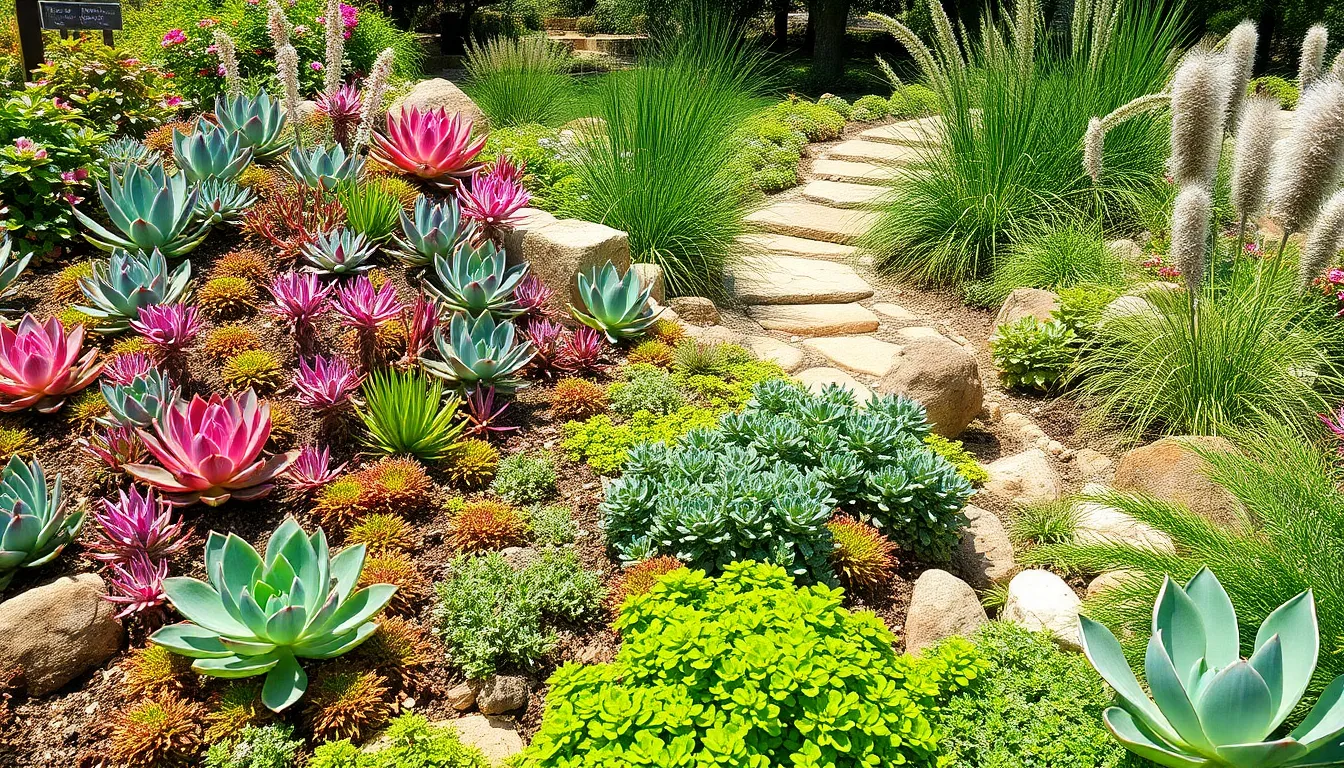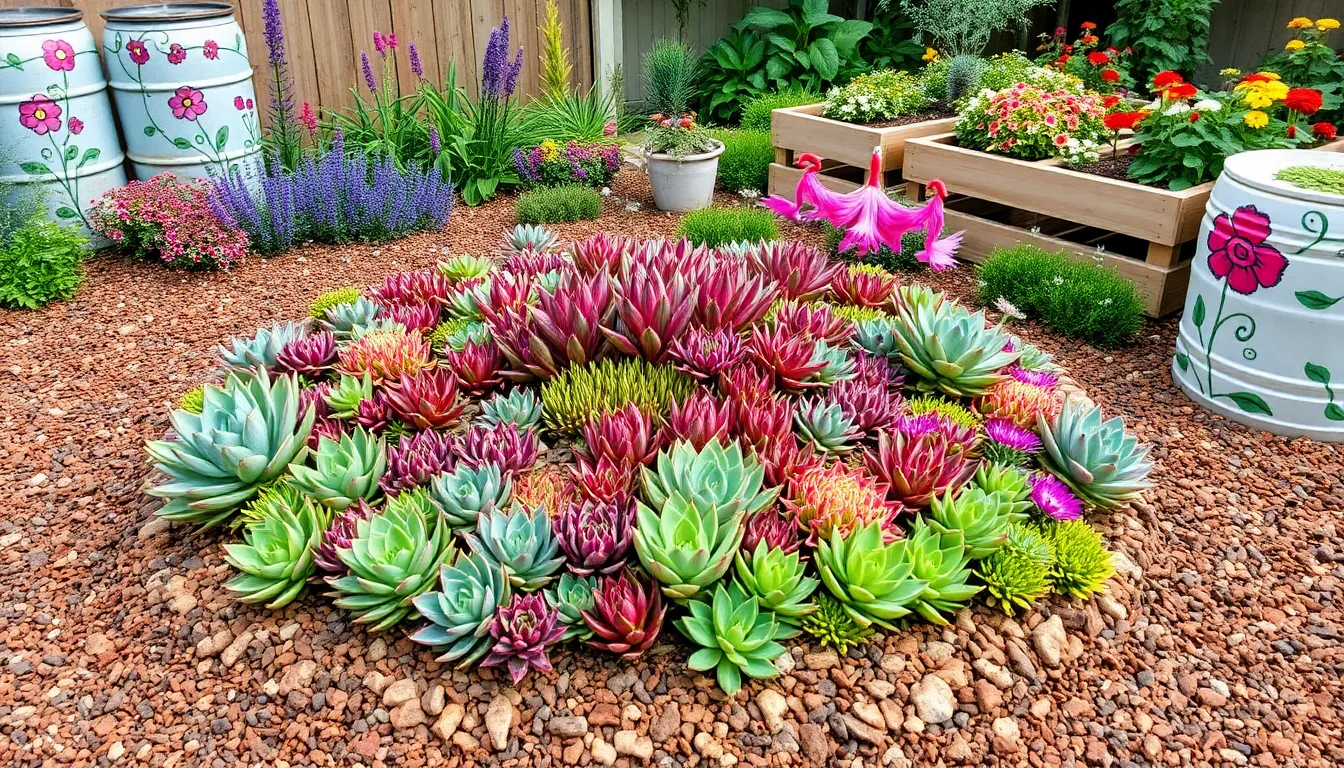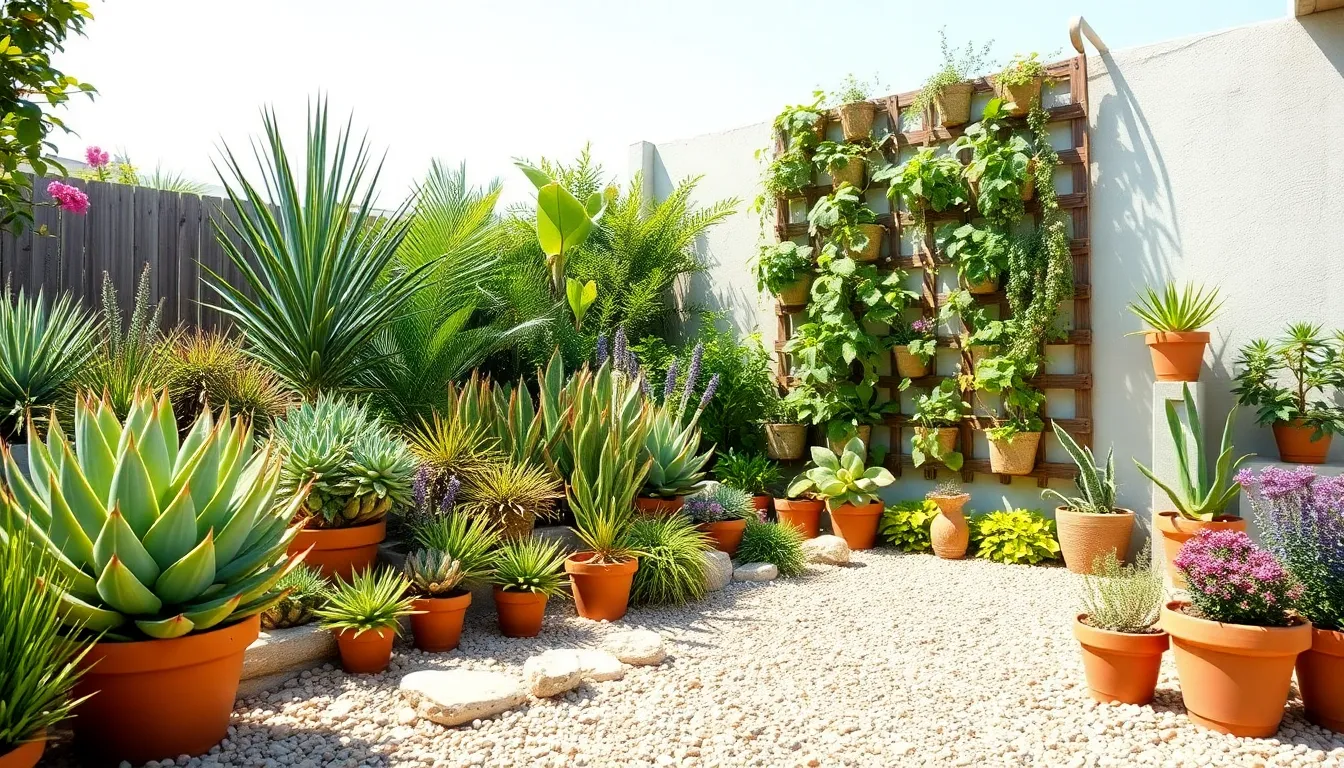Gardening is a passion that embraces both the seasoned horticulturist and the enthusiastic newcomer, offering a sanctuary of greenery and a sense of accomplishment. Yet, as global awareness grows about the importance of conserving our precious water resources, gardeners are increasingly seeking methods to cultivate lush landscapes that respect and protect the environment. If you’ve ever felt daunted by the prospect of maintaining a garden or sought smarter ways to make your gardening efforts more sustainable, you’re not alone. The good news is that low-maintenance, water-saving techniques can transform your garden into a thriving oasis with minimal fuss.
In this article, we’ll explore 11 innovative strategies that blend efficiency with the beauty of nature, making garden care more accessible than ever. From selecting drought-tolerant plants to implementing smart irrigation systems, these techniques are designed to fit seamlessly into your gardening routine, whether you’re tending a sprawling backyard or a modest balcony garden. You’ll discover how to create a resilient garden that not only survives but thrives, even in the face of water restrictions or dry spells. Embrace the joy of gardening with confidence, knowing you’re contributing to a sustainable future while enjoying the fruits of your labor.
Install Drip Irrigation Systems
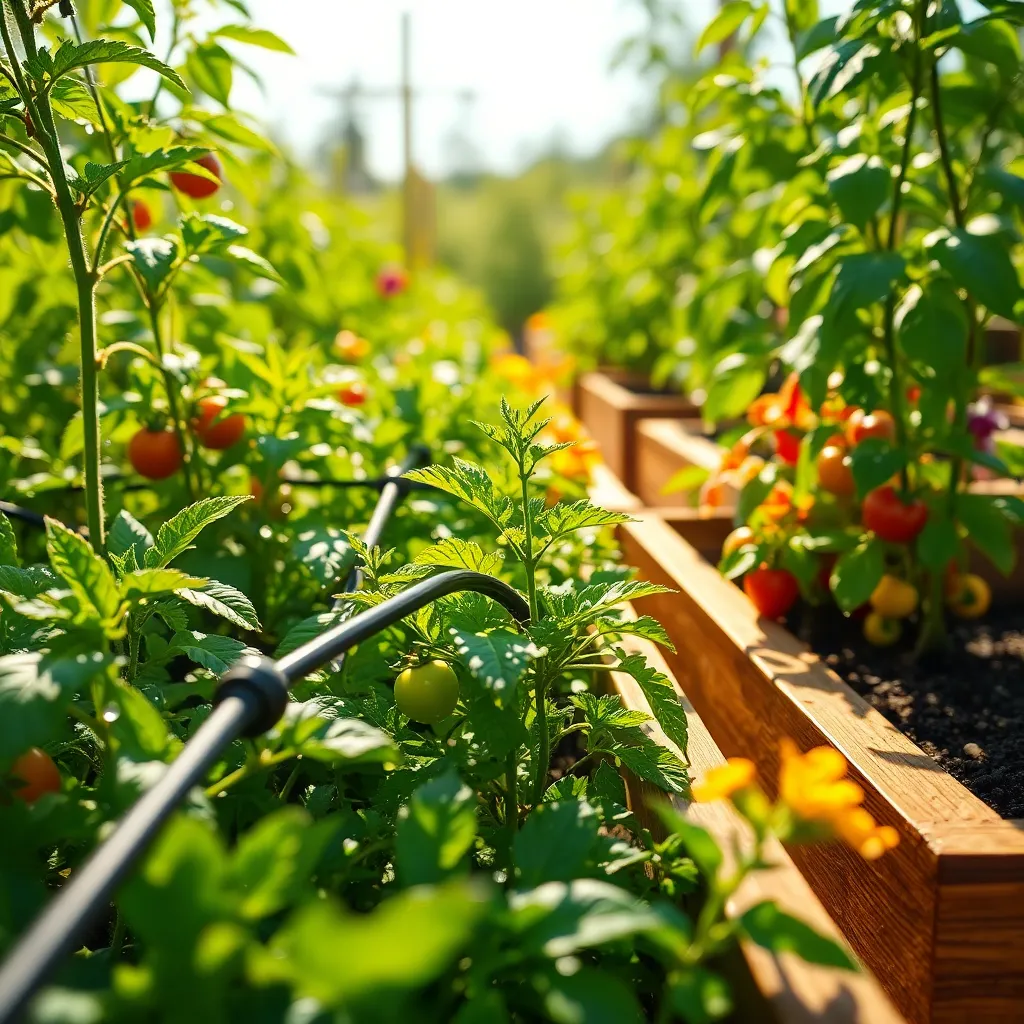
Installing a drip irrigation system is an excellent way to conserve water in your garden while ensuring plants receive consistent moisture. These systems deliver water directly to the plant roots, minimizing evaporation and runoff, thus making them highly efficient.
To get started, you’ll need to plan your layout by identifying the plants you wish to water and their specific needs. Measure the distance between plants to determine how much tubing you’ll need, and select appropriate emitters to control the flow rate for different plant types.
Begin installation by laying the mainline tubing along your garden rows and connecting it to a water source. Use connectors and emitters to customize the system, ensuring each plant receives the right amount of water, typically between 0.5 to 1.5 gallons per hour based on the plant’s size and water requirements.
Once installed, regularly check your system for clogs or leaks, especially around emitters, to maintain efficient operation. For those looking for advanced control, consider installing a timer to automate watering schedules, tailoring them to seasonal changes and plant growth stages.
Choose Drought-Tolerant Plants
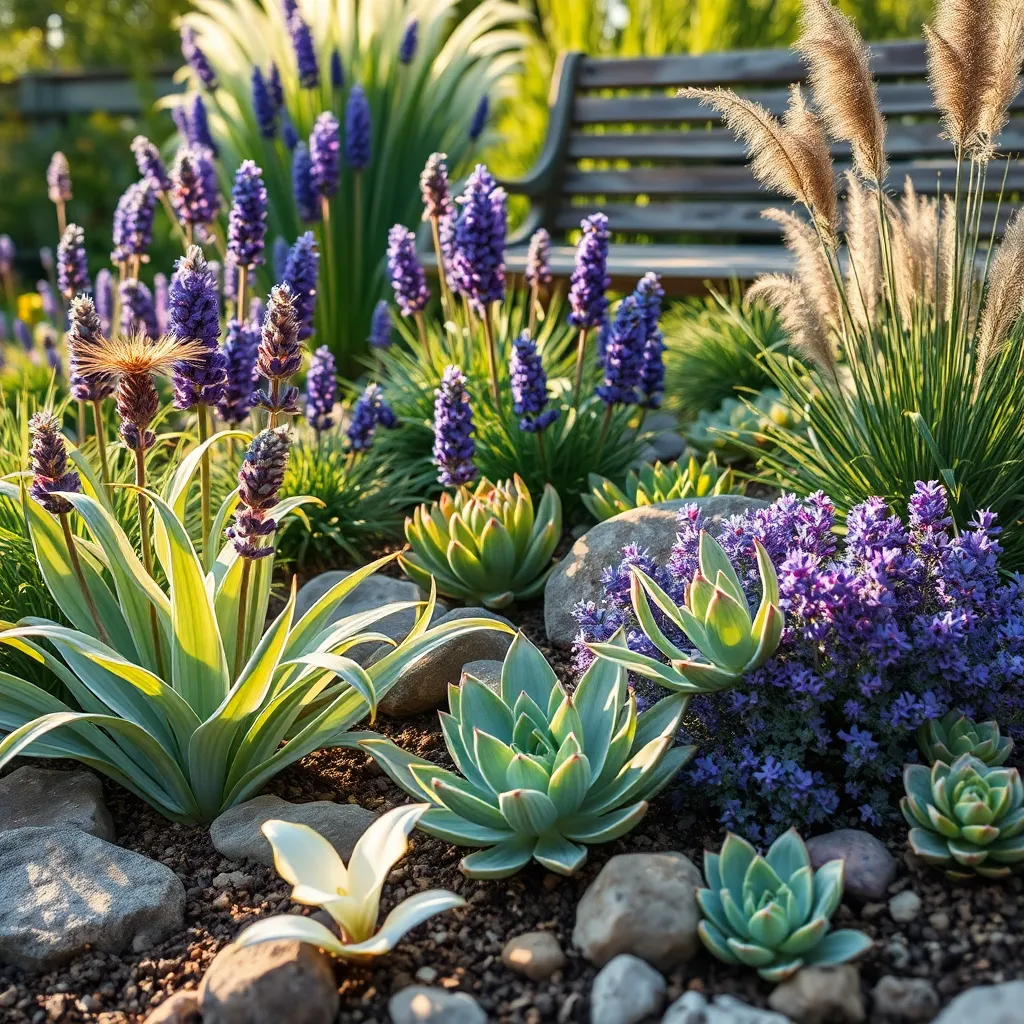
Choosing drought-tolerant plants is a smart strategy to create a garden that thrives with minimal water. These plants are adapted to survive in dry conditions, reducing the need for frequent irrigation.
Start by selecting native plants, as they often have a natural resilience to local climate conditions. Examples include lavender, yarrow, and sedum, which are known for their ability to conserve water efficiently.
When planting drought-resistant species, ensure they are placed in well-draining soil to prevent root rot. Amend the soil with sand or gravel to improve drainage if necessary, mimicking their natural habitat.
For advanced gardeners, consider grouping plants with similar water needs together to further conserve resources. This technique, known as hydrozoning, simplifies watering schedules and enhances plant health by providing optimal conditions for each plant grouping.
Apply Mulch to Retain Moisture
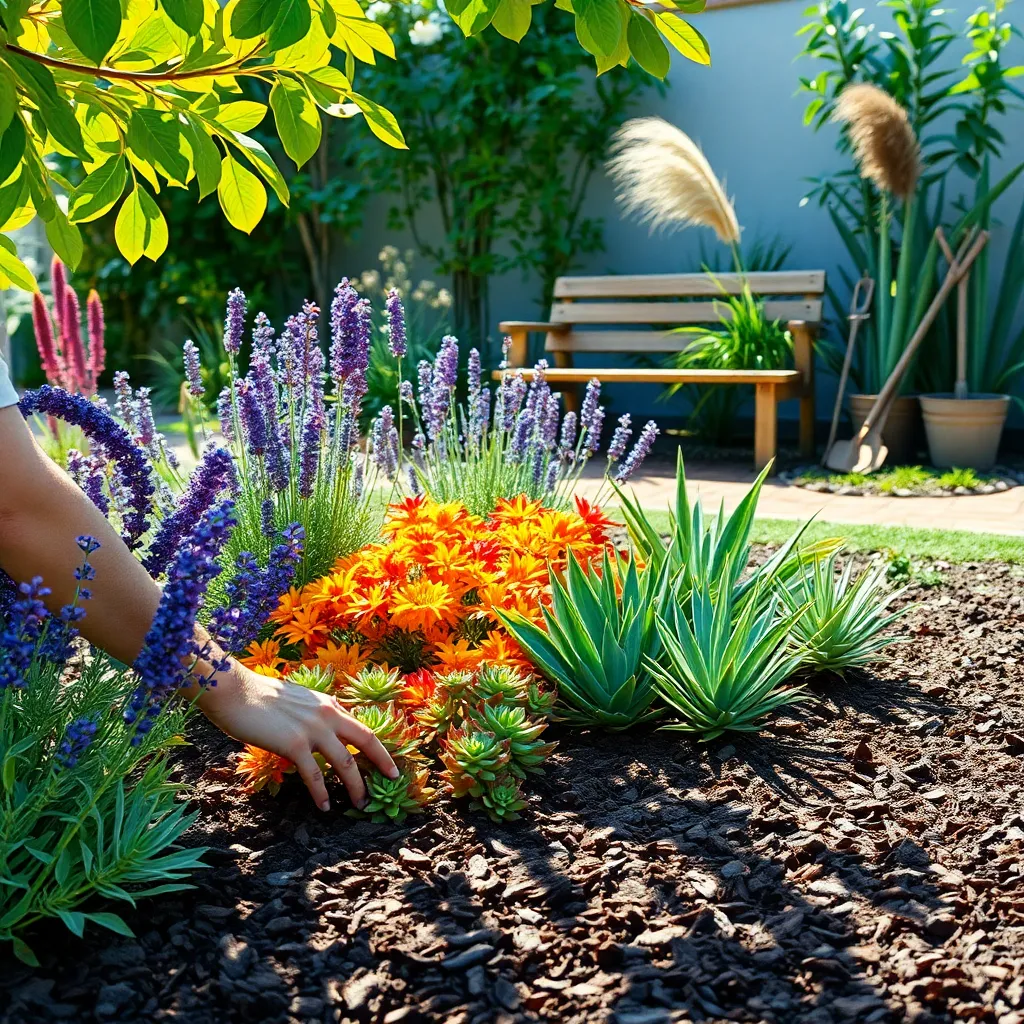
Mulching is an effective way to conserve moisture in your garden, and it’s easy to apply. By spreading a layer of mulch around your plants, you can significantly reduce evaporation and keep the soil consistently moist.
Choose organic mulches such as straw, wood chips, or shredded leaves, which break down over time and enrich the soil. For best results, apply a layer of mulch about 2 to 3 inches thick, ensuring it covers the entire plant bed without touching the plant stems.
In addition to moisture retention, mulching helps suppress weeds, which compete with your plants for water and nutrients. Regularly check your mulch layer and replenish it as needed, especially after heavy rains or strong winds that might displace it.
Advanced gardeners can consider using stone or gravel mulch in areas with high sun exposure, which can help reflect heat and further reduce water loss. However, keep in mind that these materials do not break down and add organic matter to the soil. For optimal results, combine different mulching materials tailored to your specific garden needs and climate conditions.
Group Plants by Water Needs
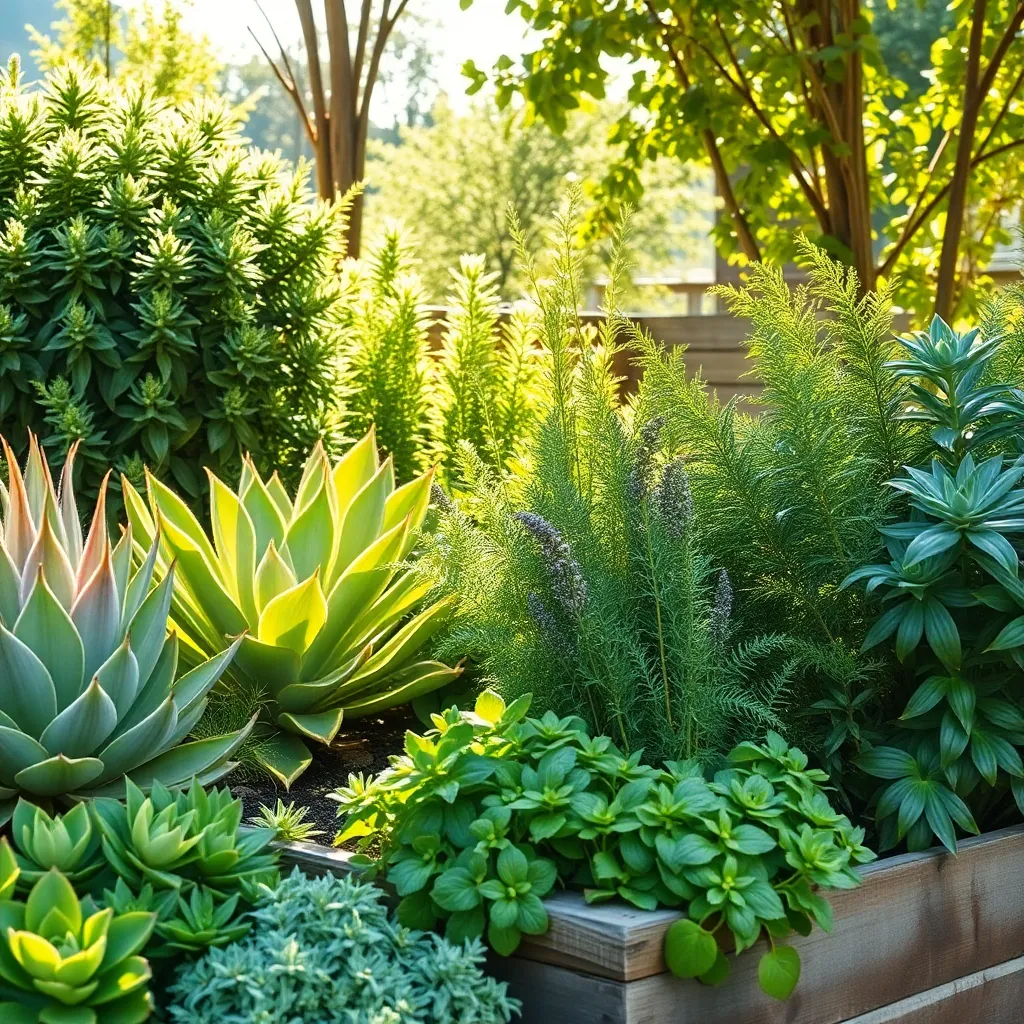
Grouping plants by their water needs is a strategic way to create a garden that thrives with minimal effort. By placing plants with similar watering requirements together, you can ensure that each plant receives the right amount of moisture without over or under-watering.
Start by identifying which plants have high, moderate, or low water needs. High-water plants like ferns and impatiens thrive in consistently moist soil, whereas low-water plants such as succulents and lavender prefer dry conditions. To make this grouping more effective, consider the soil type as well; sandy soil is great for drought-tolerant plants, while clay soil can retain moisture for thirstier varieties.
For beginners, a simple approach is to create three distinct zones in your garden: one for each water requirement category. This setup allows for targeted watering strategies, like using drip irrigation in the high-water zone and less frequent watering in the low-water zone. More advanced gardeners might incorporate rain gardens or swales to channel and make use of natural rainfall efficiently.
When grouping plants, it’s also essential to consider their sunlight needs, as this can affect their water uptake. Plants that thrive in full sun may require more frequent watering than those in shade, even if they’re in the same water-need category. By observing your garden’s microclimates, you can further refine plant groupings to optimize both water and sun exposure.
Use Rain Barrels for Collection
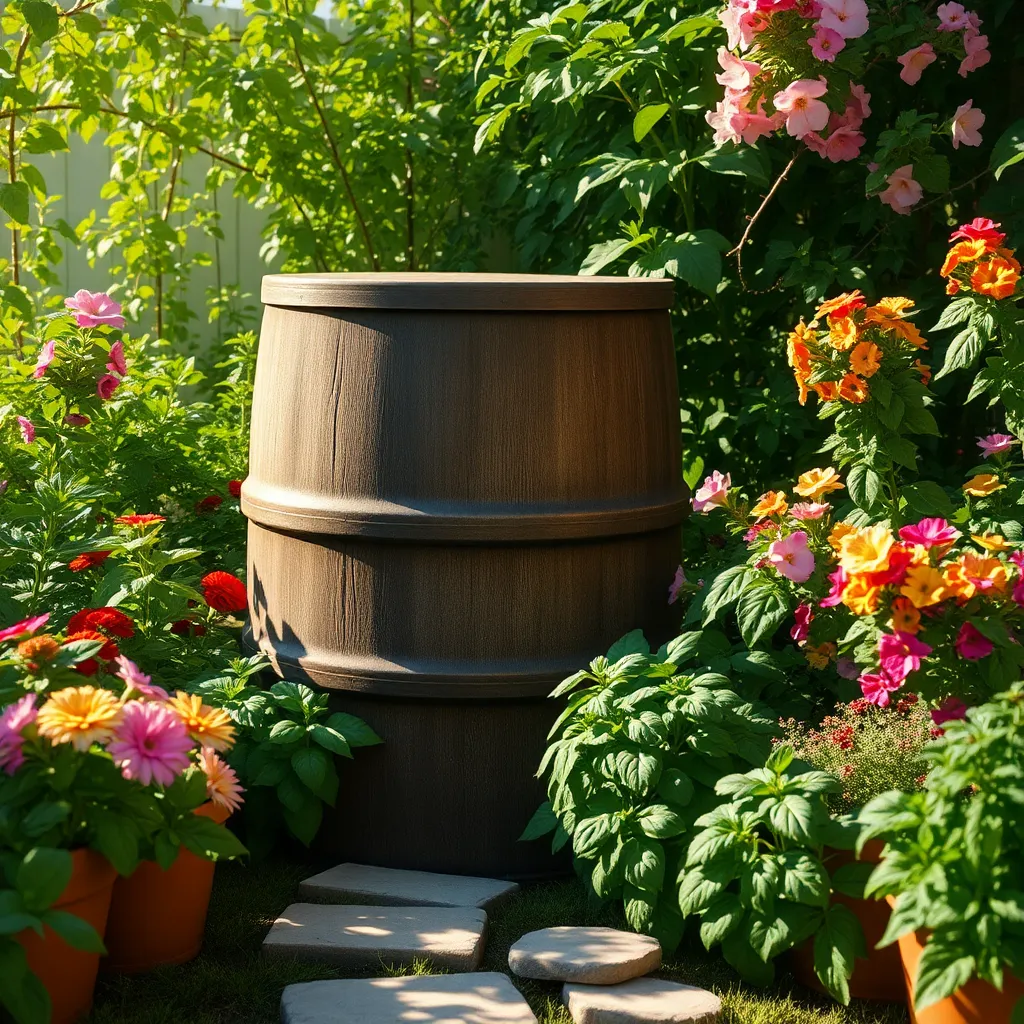
Using rain barrels to collect water is a simple and effective way to conserve water in your garden. These barrels capture rainwater from your roof, providing a free and sustainable water source for your plants.
Placing rain barrels under downspouts is an easy setup that maximizes water collection. Ensure the barrels have a tight-fitting lid to prevent debris and insects from contaminating the water.
Beginner gardeners will find rain barrels a straightforward way to reduce their water bills while maintaining healthy plants. For added convenience, consider installing a spigot at the bottom of the barrel to attach a hose for direct watering.
Advanced gardeners can integrate rain barrels into a drip irrigation system for even greater efficiency. This approach allows you to deliver water directly to plant roots, minimizing evaporation and ensuring each plant receives the right amount of moisture.
Incorporate Native Plant Species
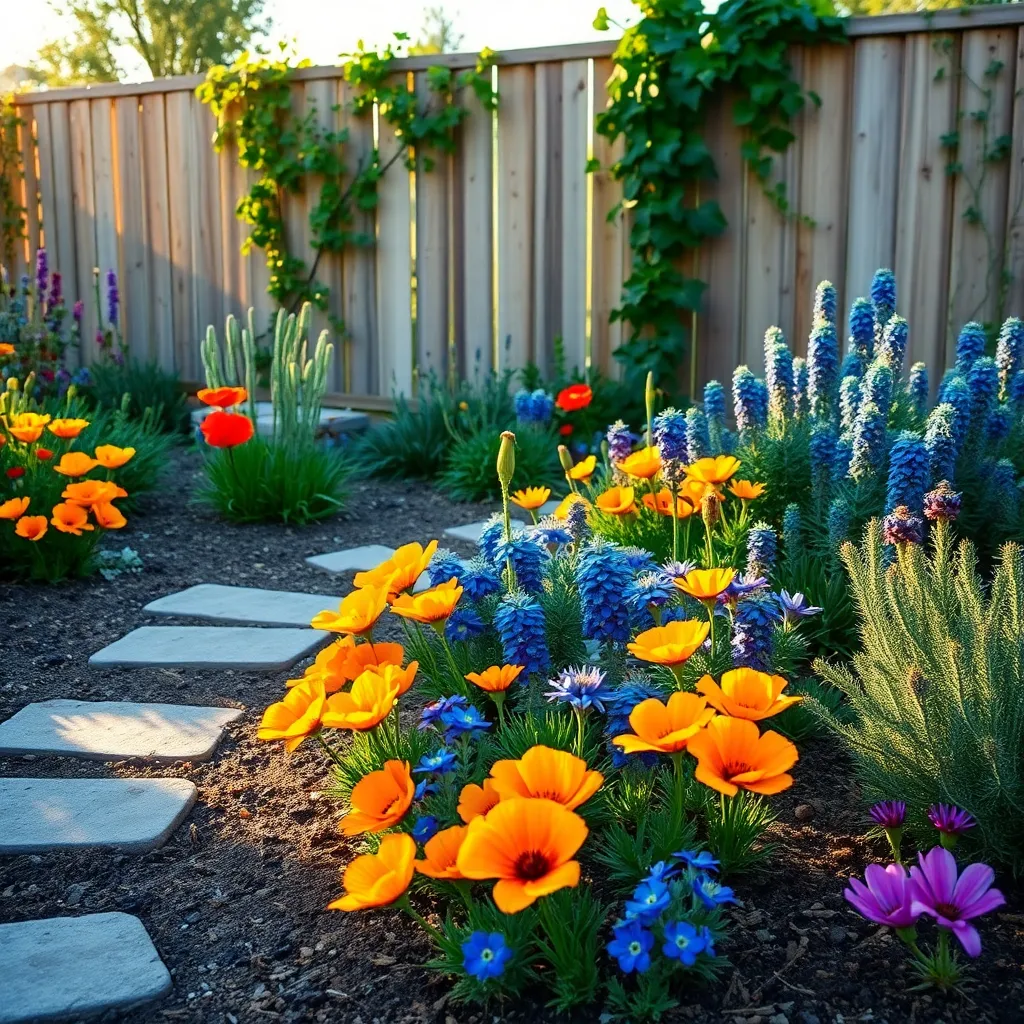
Incorporating native plant species into your garden is a brilliant way to conserve water and reduce maintenance. Native plants have adapted to the local climate and soil conditions, requiring less water and fewer resources than non-native varieties.
When selecting native plants, consider those that are naturally resilient to your region’s typical pests and diseases. This reduces the need for chemical interventions and promotes a healthier garden ecosystem.
For beginners, start with easy-to-grow options such as coneflowers, black-eyed Susans, or lavender, which thrive in a variety of soils and require minimal watering once established. More experienced gardeners might experiment with region-specific wildflowers or shrubs that can add diversity and attract local pollinators.
To ensure success, plant native species in well-drained soil and use a layer of mulch to retain moisture and suppress weeds. Regularly check the soil moisture level by sticking your finger an inch into the ground; if it feels dry, it’s time to water, but native plants often need less frequent watering than their exotic counterparts.
Water During Early Morning Hours
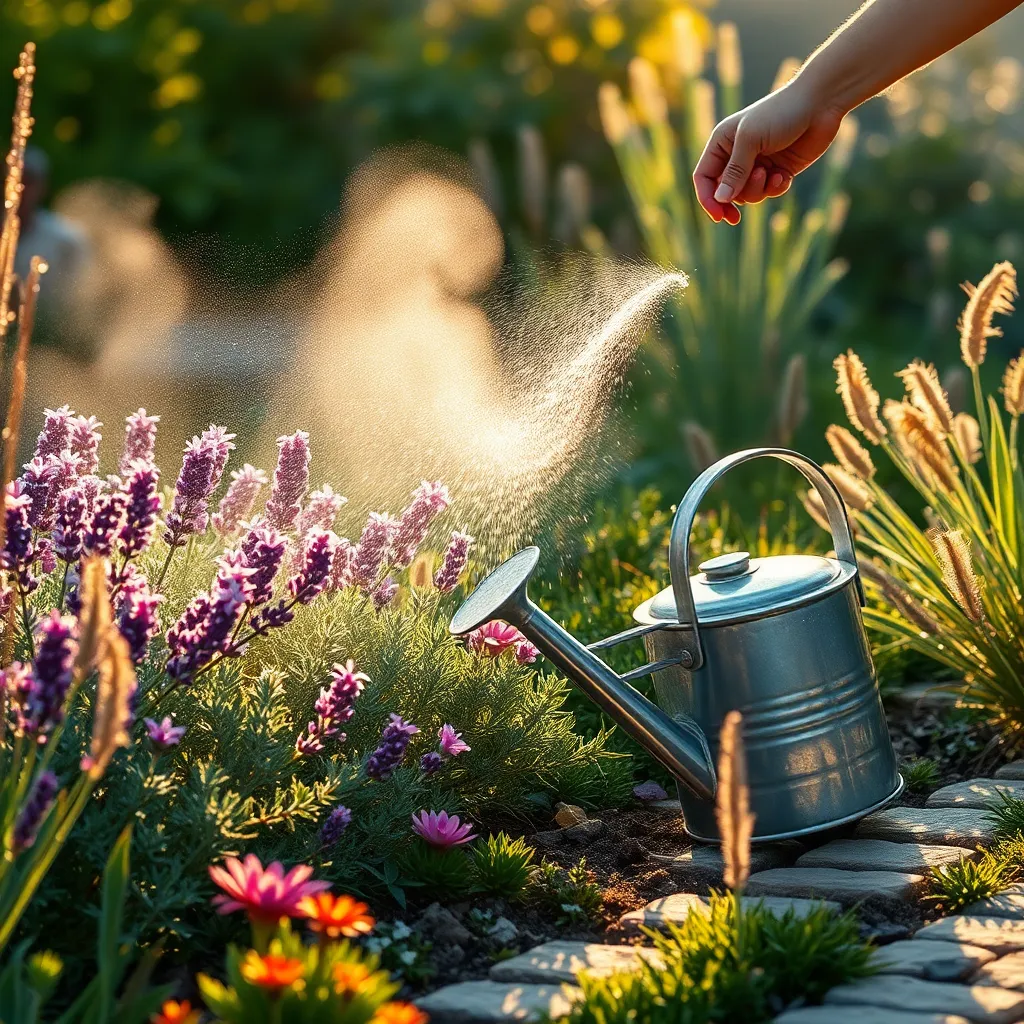
Watering your garden during the early morning hours is a highly effective way to conserve water and promote healthy plant growth. Early morning watering allows the water to penetrate the soil effectively before the sun’s heat causes rapid evaporation.
In the cooler morning temperatures, water absorption is maximized, ensuring that plants receive the hydration they need. This timing also helps to prevent diseases, as foliage has time to dry out before nightfall, reducing the risk of fungal infections.
For those new to gardening, setting up a timer on your irrigation system can simplify the process, ensuring consistent and timely watering. More experienced gardeners might consider using a drip irrigation system, which delivers water directly to the plant roots, further minimizing evaporation and runoff.
Ideally, water should be applied slowly to allow it to soak deeply into the soil, encouraging roots to grow deeper and more robust. Opt for watering methods that focus on the root zone, such as soaker hoses, which are particularly effective in sandy or clay soils that might otherwise hinder water penetration.
Reduce Lawn Size with Groundcovers
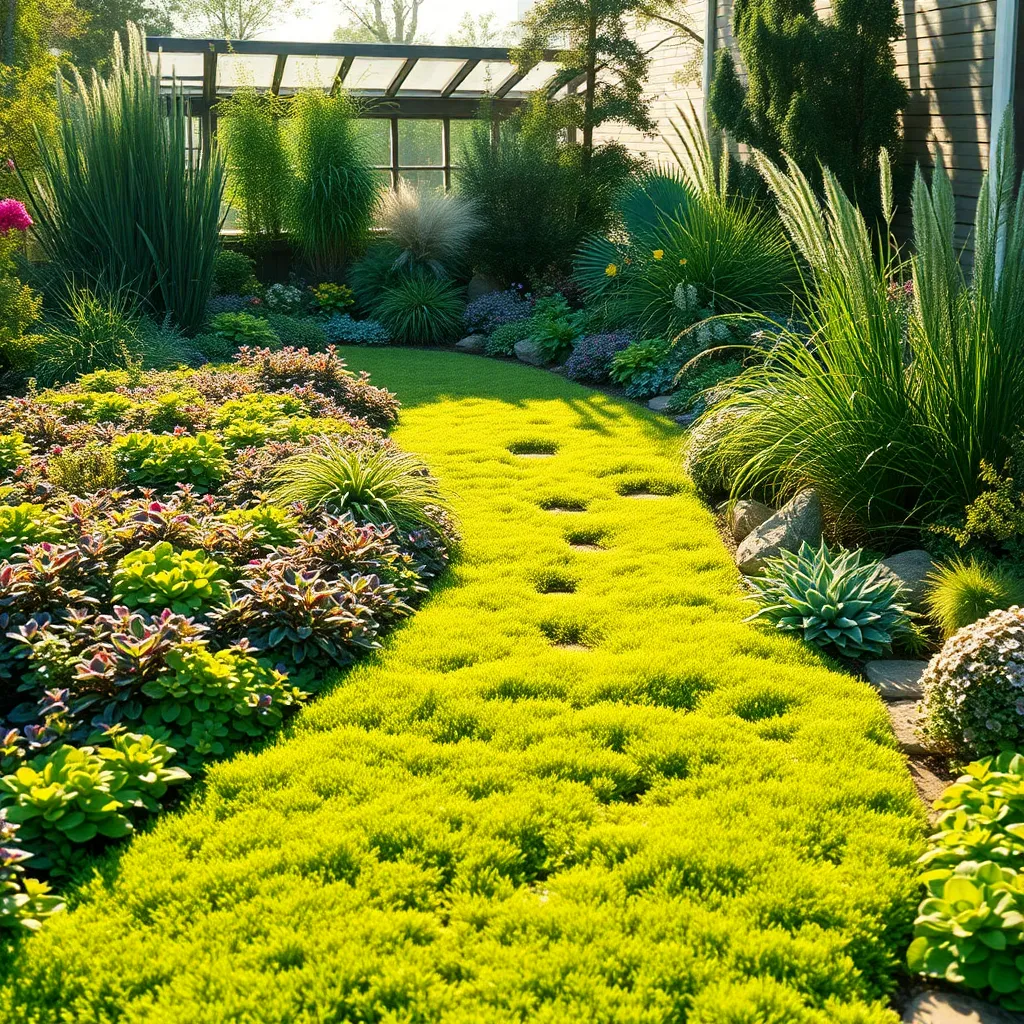
Transitioning from a traditional lawn to a landscape abundant in groundcovers can significantly reduce maintenance efforts. Groundcovers such as creeping thyme or Irish moss not only conserve water but also require much less mowing than a conventional grass lawn.
To successfully integrate groundcovers, begin by assessing the sunlight and soil conditions of your garden. These plants generally thrive in well-drained soil and can adapt to both sunny and partially shaded areas.
Choosing the right groundcover is crucial for success; options like sedum and ajuga offer vibrant colors and textures. Sedum prefers sunny spots and requires minimal watering once established, making it an excellent choice for drought-prone areas.
For a lush, green carpet effect, consider using clover as a groundcover, which enriches the soil with nitrogen. Water new plantings regularly until they are established, and then reduce watering to once a week or as needed based on rainfall.
Create Shade with Tall Plants
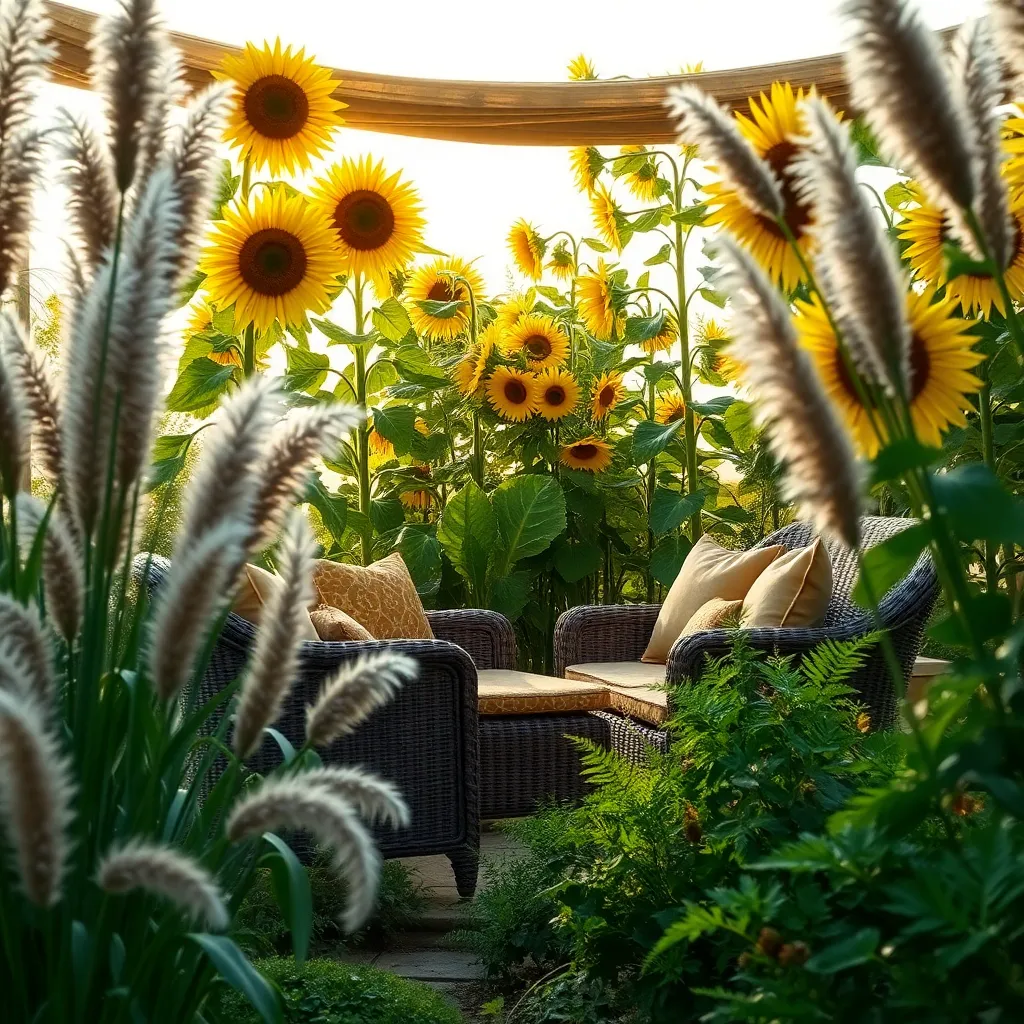
Tall plants can serve as natural shading solutions in your garden, reducing the need for artificial structures. Consider planting bamboo or ornamental grasses that can reach impressive heights, creating not only shade but also a lush, vertical element.
For those in warmer climates, bamboo is a fantastic choice due to its rapid growth and dense foliage. Ensure it’s planted in well-drained soil and receives regular watering, especially during dry spells, to maintain its vigor.
Ornamental grasses such as Miscanthus or Pampas grass are excellent for temperate zones, offering both shade and a beautiful display. These grasses thrive in full sun and require minimal maintenance, apart from seasonal pruning to encourage new growth.
As these tall plants mature, they can significantly lower soil evaporation rates by casting shade over the garden. This benefit not only conserves water but also promotes a cooler microclimate, ideal for more delicate plants that prefer indirect light.
Implement Xeriscaping Techniques
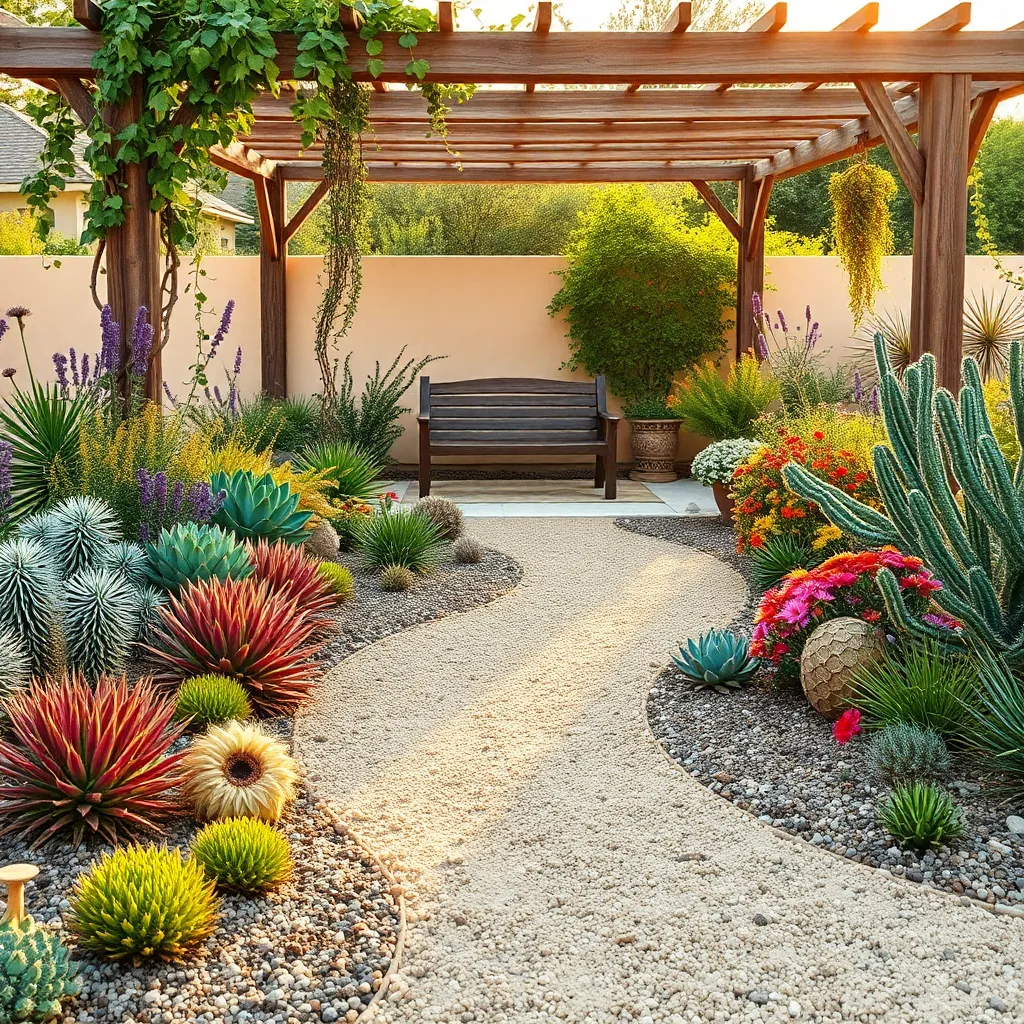
Xeriscaping is a landscaping method that reduces or eliminates the need for supplemental water from irrigation. Start by selecting drought-tolerant plants that thrive in your climate, such as lavender, succulents, and sage, which require minimal watering once established.
Incorporate a variety of plants with different textures and colors to create visual interest while maintaining low water usage. Use soil amendments like organic compost to improve drainage and help retain moisture, benefiting both beginner and experienced gardeners.
Group plants with similar water needs together to make watering more efficient and conserve water. Consider installing drip irrigation systems to deliver water directly to the plant roots, reducing evaporation and ensuring that each plant gets the moisture it needs.
Mulching is another vital technique in xeriscaping, as it helps retain soil moisture and suppresses weeds. Apply a thick layer of organic mulch, such as shredded bark or wood chips, around your plants to keep the soil cool and moist.
Regularly Check for Leaks and Repair
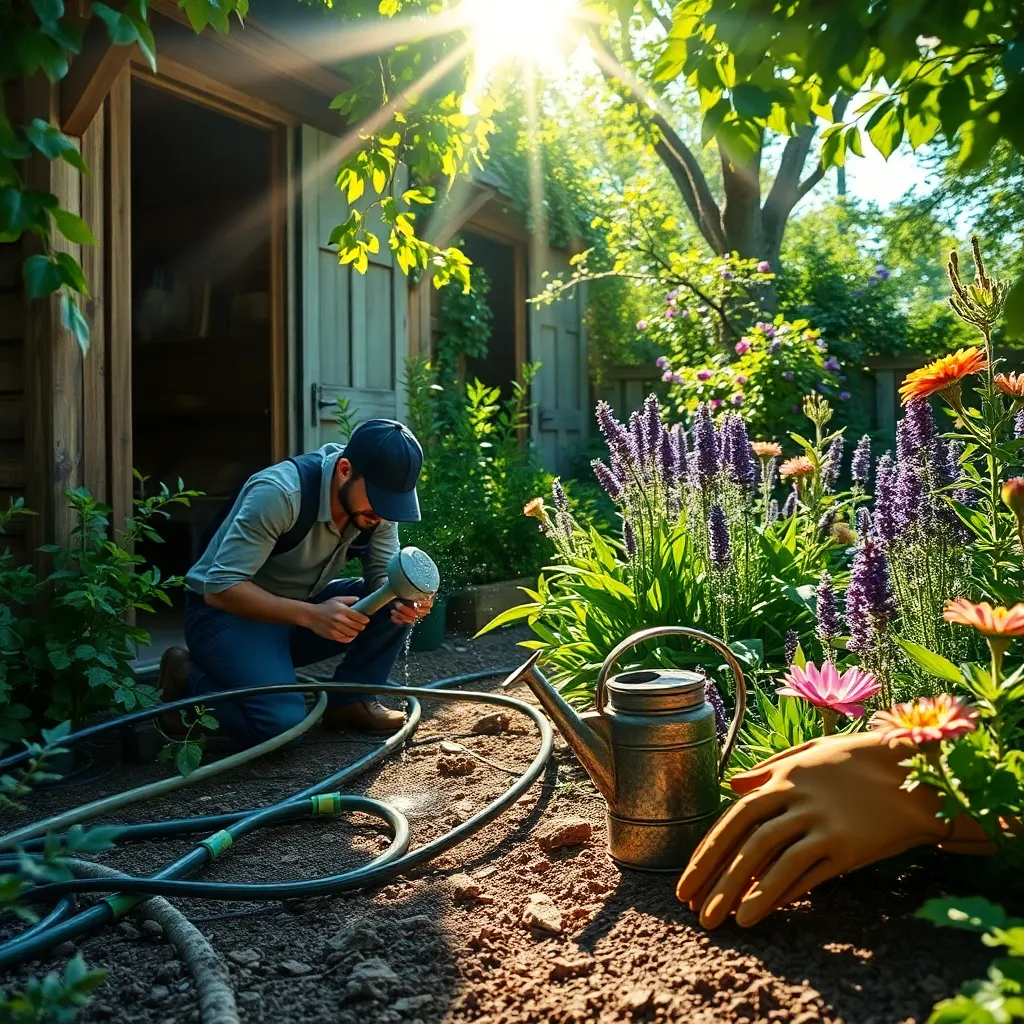
Regularly inspecting your garden for leaks is crucial to conserving water and ensuring plant health. Check hoses, connectors, and irrigation systems for any signs of wear or damage that might lead to water wastage.
Preventative maintenance can save you from more extensive repairs down the line. Replace faulty washers and seal leaks with waterproof tape or new fittings as soon as you spot them.
For those using drip irrigation systems, make sure to examine emitters and tubing for clogs or cracks. Clean or replace emitters to maintain efficient water distribution and prevent overwatering.
Advanced gardeners can install moisture sensors to monitor soil hydration levels. This technology helps to detect areas receiving excessive water due to leaks, allowing for targeted repairs.
Conclusion: Growing Success with These Plants
In nurturing and sustaining the garden of relationships, we’ve explored 11 transformative techniques: prioritizing open communication, setting mutual goals, practicing gratitude, embracing flexibility, respecting personal space, fostering trust, sharing responsibilities, nurturing emotional intimacy, celebrating milestones, supporting individual growth, and cherishing shared activities. Each concept is a seed, planted for a relationship that flourishes with minimal strain yet abundant in joy and connection.
Today, take one step: choose a technique that resonates most with your current situation and commit to integrating it into your relationship. Whether it’s sharing a simple thank you or setting a goal together, small actions can lead to substantial growth.
As you embark on this journey, remember to bookmark this article. It’s a resource designed to guide and support you, offering insights that are ever-relevant as your relationship evolves.
Looking ahead, envision success not as a destination but as an ongoing, rewarding process. With these techniques in hand, you are well-equipped to cultivate a relationship that thrives. Trust in the process, and know that every effort you invest in today lays the groundwork for a fulfilling partnership tomorrow.

